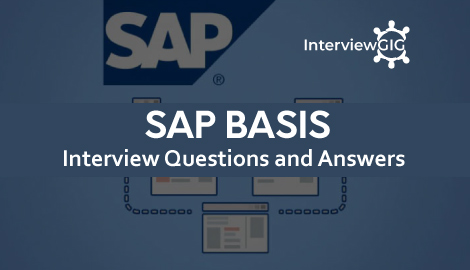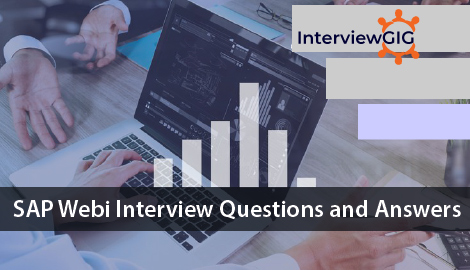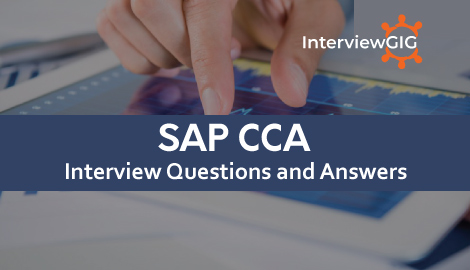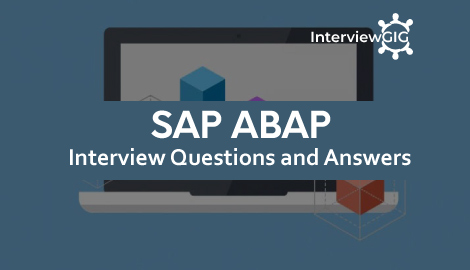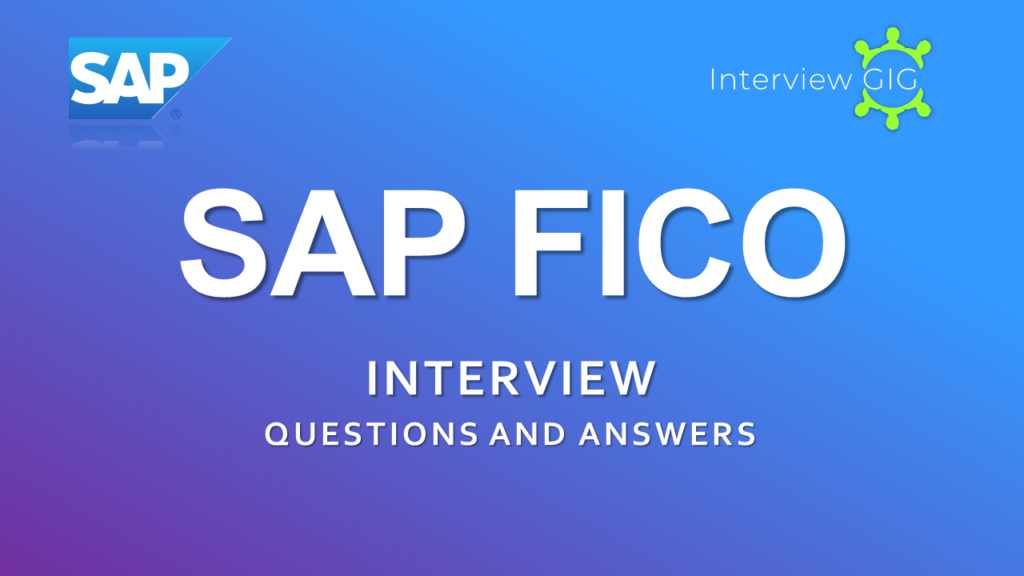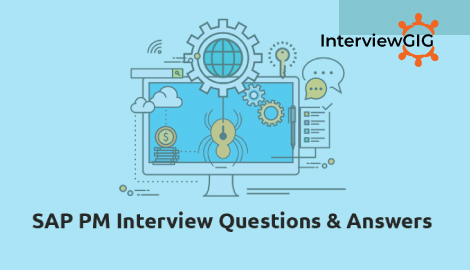What is the use of SAP Supplier Relationship Management?
SAP Supplier Relationship Management SRM is SAP product that facilitates the procurement of goods via a web-based platform. Organizations can procure all type of products like direct and indirect material, services and this can be integrated with SAP ERP modules and other non-SAP back end systems for accounting and planning.
SAP SRM allows you to optimize your procurement process to work effectively with suppliers to get long term benefits and also to perform forecasting, procurement cycle and to work with partners. You can reduce the time span and costing of procurement cycle using innovative methods to manage business processes with key suppliers.
SAP Supplier Relationship Management supports the full procurement cycle i.e. starting from source and purchase to pay through complete procurement process with suppliers and effectively managing supplier to build long term relationship.
Discuss about the benefits that SAP SRM brings to a business?
SAP SRM enables the organization to achieve the following business benefits: Sustainable cost savings- which enables the companies to achieve a closed loop from source-to-pay.
Contract compliance – provides visibility into enterprise expenditures and enables the procurement organization to effectively demonstrate according to corporate guidelines.
Competitive advantage – gives the tools to partner with key suppliers, define supplier management approach, and determine the key metrics.
What are the key functions that you perform under SAP SRM module?
Catalog Management
Suppliers can easily manage catalog data and can be easily integrated with business processes like accounting, finance and planning.
Procure to Pay Optimization
Using SAP SRP product, you can streamline procure to pay life cycle and improve communication with supplier and cost management.
Self Service Procurement
End users can search products using multiple product catalog and helps them to find and purchase product that are compliant with purchase and procurement policy of the company.
Reporting Functionality
Using SAP Supplier Relationship management, you can create reports related to procurement activities, compliance and contract management, and managing costing in procurement process.
Contract Management
You can manage contracts using centralize secure repository that helps to reduce compliance violations and allows end users to follow business processes during self-service procurement.
What is the use of workflows in SAP Supplier Relationship Management?
Workflows are used to perform easy approvals of PO’s allows organization to perform goods requisition easy and simple.
Where do you use Standalone deployment model in SRM?
When there is no operational backend system for material management and there exists only financial accounting systems in landscape.
When you want to move all procurement activities in SAP SRM system and hence allow companies to decrease the work load on the backend procurement system by transferring buyers which are interested to procure from selected options.
It is recommended for customers who want to maintain only minimal product data and only rely on supplier catalogs.
What is the difference between classic and extended classic option?
In a classing deployment model, you process the shopping cart in SAP SRM and supporting documents are processed in backend ERP system.
You can perform goods receipt or invoices in any of the system.
In extended classic deployment model, procurement process takes place in SAP SRM system and PO is generated in SRM system and a read only copy is created in back end ERP system.
You can perform goods receipt or invoices in any of the system as in case of classic scenario.
Where do you use Classic deployment scenario in SRM?
For those customers who has a strong backend procurement system and where buyers do not want to use multiple systems for their operations.
What is a Contract? Can you place multiple contracts for similar goods in SAP SRM Contract Management?
In SAP SRM, contract is defined as a negotiation between a supplier and an organization for supply of goods and material or delivery of services within defined terms and conditions in a specific time period. These contracts are placed at central secure location to resolve the lack of visibility into contract across the different groups.
This allows you to manage different local contracts with different terms and conditions for the similar type of goods.
What is the benefit of using Central Contract management process?
Central contract management allows buyers form different part of company from different locations to take advantage of negotiated terms and conditions. The terms and conditions are transitioned into a central contract and to be distributed to local purchasing group to perform procurement process for the company.
What purpose does the SRM org structure serve?
Organizational attributes serve many purposes in EBP system. The primary purpose is to set attributes that define the users` shopping experience. Examples of such attributes are company code, plant and cost centers that the user can order against, etc.
How do you perform a search for Contracts in SAP SRM?
To perform contract search you can use TREX search engine. This search engine is provided with SAP SRM but you have to install it and run program to create indexing for all the available contracts.
You should run program BBP_TREX_INDEX_ADMIN that creates a new index for existing documents and helps you to perform indexing for all new or changed documents when a contract is saved.
What is Live Auction Cockpit LAC?
LAC web presentation server is a J2ee based software application. This provides user with an option of real time bidding, real time monitoring and reverse auction options.
Apart from these technology components also includes SAP Process Integrator for integrating processes from different systems, SAP GUI for configuration and R/e plug in for data exchange between one or more R/3 systems and other components.
How do you upload and manage central contracts in ERP?
You can upload contracts in SAP ERP system by going to SAP ERP Central Component → Logistics → Materials Management → Purchasing → Outline Purchase agreements with vendors → Contract → Central Contract → SRM Central Contract
When a contract is set to completed status?
When a contract is expired or released status and you select close contract, the status of contract is set to complete and this is irreversible status.
You can search the completed contracts and use them as template for creating new contracts.
What is the difference between in negotiation and in renew status of a contract?
In Negotiation
When a contract is selected for renew and is in saved state, the status of contract is set as in negotiation.
In Renewal
This is set when you select a contract for renew is in released state.
What is the use of Request for quotation RFx?
A bid invitation is defined as a request from a buyer to a supplier to submit a quotation for goods or services as per mentioned criteria. Bid invitation is also known as request for quotation RFx.
A request for quotation RFx is an invitation sent to supplier by an organization’s purchase department to submit RFx response for the supply of certain goods under specified terms and condition. RFx document contains information like vendor name, vendor’s address, goods quantities and delivery dates for the material.
You can create RFx with reference to a purchase requisition and all the information is copied from the purchase requisition. When RFx is created without any reference, you can enter the details manually in RFx document.
What is difference between public and restricted bid invitation?
Public Bid Invitations
These bid invitations are available to all bidders via a web portal. Bidders can access the url available on web portal to login to SAP bidding engine and there they can enter the bids. If you want some specific bidders to send the bid, you can directly email them the bid invitation.
Restricted Bid invitations
In restricted bid invitations, hyperlink to login to SAP bidding engine is sent to some specific set of bidders via email. Bidders can login to Bidding engine and enter the bid.
What is the difference between a business partner and a partner function?
Generally, in SRM business, partner means the entire stake Holders. Example: suppliers, customers, vendors, employee, etc. The function of partner is to make the vendors as reference, and then there will be invoicing party, supplying party, etc.
Business partner means those who supply the raw material to the customer i.e. buyer.
Explain bid invitation and Quotation process in SAP SRM?
A Quotation is defined as a response to RFx where a bidder confirms the goods selling and services to buyers/purchasers as per specific criteria. As part of bid invitation process when the email is triggered, supplier gets the information on the request for quotation.
Suppliers start bidding as per the bid invitation and when they submit the bid in SAP Bidding engine, final price is shown. Suppliers can bid till the end date is reached and once bids are closed, purchases can perform a price comparison to get the best supplier and to award the bid, and purchase order can be raised for the best supplier.
How do you create a Live Auction?
To create a live auction, purchasers can use SAP Bidding engine and auction takes place in Live Auction cockpit. Purchasers can create live auction −
- Using an Auction template
- By copying an auction
- In SRM portal from the Sourcing application
What is the use of configuring number ranges in SRM?
Number ranges must be established for EBP shopping carts as well as any potential purchasing document so that unique numbers can be generated in the backend R/3 system from EBP.
The EBP system needs a number range established that automatically takes the next available number and assigns it to the document which will be created in R/3.configuration must also be established in R/3 to correlate with the ranges in EBP so that conflict never arise when purchasing document.
What is the use of Organization structure in SAP SRM?
To set attributes that define the users` shopping experience. Examples of such attributes are company code, plant and cost centers that the user can order against, etc.
What are different types of shopping carts?
- Professional Shopping Cart
- Simple shopping Cart
What is the difference between Professional and Simple shopping cart?
Professional Shopping Cart Form
In this shopping cart, most of the fields are used by professional buyers and employees. In header section, you have details of shopping cart- cart number, name, status, created date and who has created the shopping cart.
Simple Shopping Cart Form
Like the above shopping cart, you can use a simplified shopping cart form with less number of fields. This is suitable for users who has no experience and limited authorization.
It only depends on the catalogs and no other options are there for purchasing.
What are the key business process in SAP SRM ?
The key business process in SAP SRM includes:
- Procure to pay- we can integrate catalogue-based requisition and gain the benefits of e-procurement.
- Catalogue management- manages catalogue data as master data that is deeply integrated.
- Centralize sourcing- gain visibility into the demand for goods and services.
- Centralized contract management- consolidates contract information.
- Supplier collaboration- links supplier to our purchasing processes through the supplier portal.
Which processes of SAP SRM is linked with SAP MM?
To replicate Purchase Organization, Purchase group, material master, vendor master from backend. You can create PO in SRM and replicate PO in the R/3.
What is the use of supplier management function in SRM?
It is used for managing supplier performance, implementing technologies, processes, policies, and procedures to support the purchasing process.
What are the different steps in a shopping cart wizard?
Key steps in Shopping cart −
- Selecting Goods/Services
- Shopping Cart
- Complete and Order
- Confirmation
What is Supplier Self Service process? What are the key advantages of using SUS?
Supplier self-service is one of the component in SRM that shortens the procurement life cycle time and reduce the costing of procurement process. In SUS, suppliers are provided with access to purchaser’s procurement system and they are able to provide fast response.
What is the use of company code?
By assigning a company code, you can keep financial and legal parameters and reports remain separate in the system.
Where do you define a supplier evaluation area in SAP system?
To define Evaluation area, go to SRM Server → Supplier Evaluation → Evaluation Area
What is the use of internal number ranges in for RFx and quotations in Bidding Engine?
Using internal number ranges, bids does not have a link to any R/3 purchasing document, they are completely local to the ERP system.
What are different evaluation categories as part of supplier evaluation process?
In supplier evaluation, you can divide each survey as per evaluation category. This refers to the questionnaire and the target group.
Example − Delivery, Quality, etc.
What is the key tasks that are performed using SAP SRM module?
SAP SRM performs SUS, catalog management, Procurement, Supplier Evaluation, Central Contracts, shopping carts and Live Auction Cockpit.
What is the use of configuring number ranges in SAP SRM system?
Number ranges is used to define for shopping carts and purchasing document for EBP, to generate unique number in R/3 backend system.
What are the different deployment options that you can use for Live Auction Cockpit?
- Live Auction Cockpit on Java Web Server
- Live Auction Cockpit on ABAP Web Server
- Live Auction Cockpit on Java Web Server in supplier self-services
- Live Auction Cockpit on ABAP Web Server in supplier self-services
